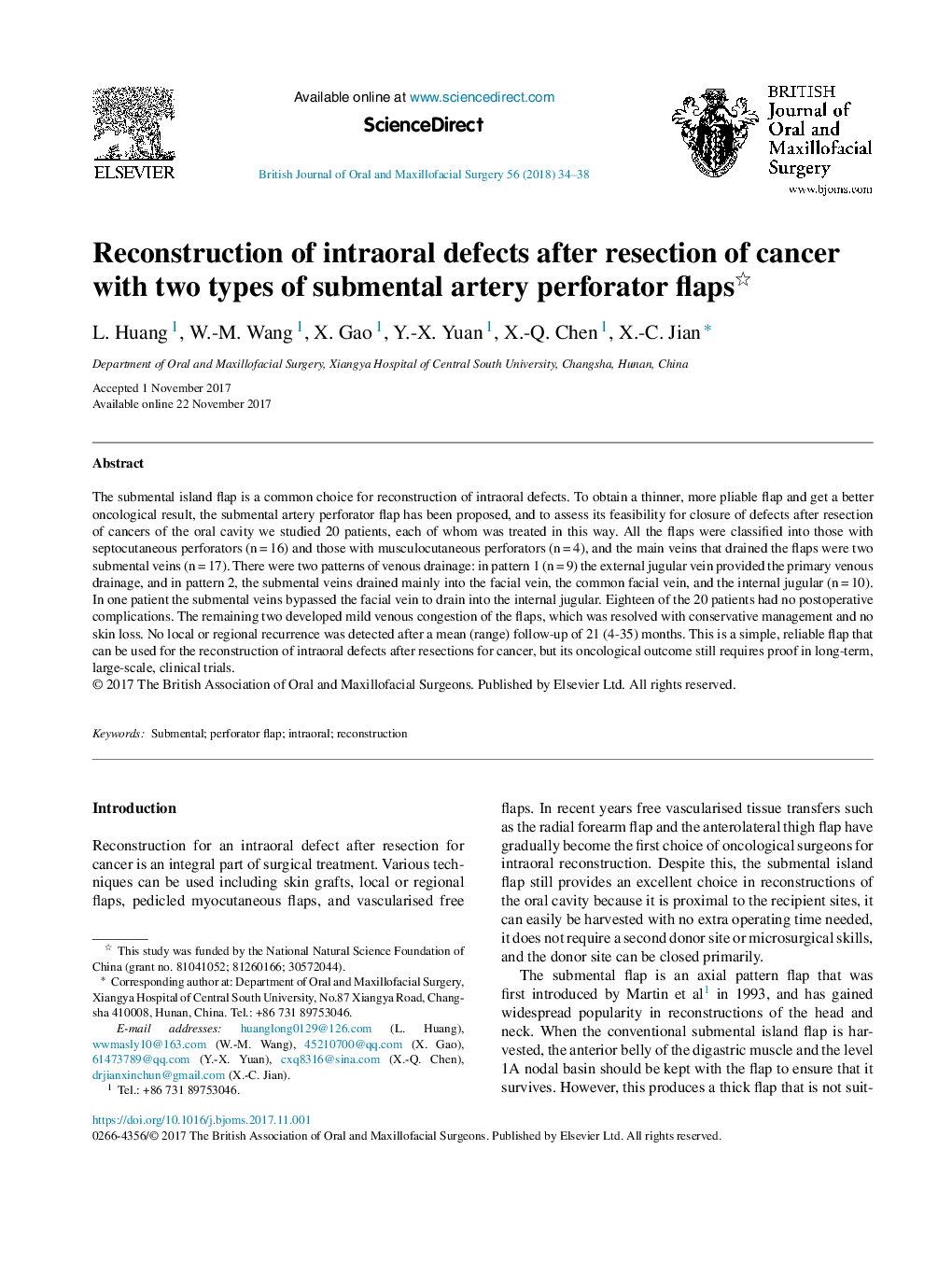| Article ID | Journal | Published Year | Pages | File Type |
|---|---|---|---|---|
| 8696821 | British Journal of Oral and Maxillofacial Surgery | 2018 | 5 Pages |
Abstract
The submental island flap is a common choice for reconstruction of intraoral defects. To obtain a thinner, more pliable flap and get a better oncological result, the submental artery perforator flap has been proposed, and to assess its feasibility for closure of defects after resection of cancers of the oral cavity we studied 20 patients, each of whom was treated in this way. All the flaps were classified into those with septocutaneous perforators (n = 16) and those with musculocutaneous perforators (n = 4), and the main veins that drained the flaps were two submental veins (n = 17). There were two patterns of venous drainage: in pattern 1 (n = 9) the external jugular vein provided the primary venous drainage, and in pattern 2, the submental veins drained mainly into the facial vein, the common facial vein, and the internal jugular (n = 10). In one patient the submental veins bypassed the facial vein to drain into the internal jugular. Eighteen of the 20 patients had no postoperative complications. The remaining two developed mild venous congestion of the flaps, which was resolved with conservative management and no skin loss. No local or regional recurrence was detected after a mean (range) follow-up of 21 (4-35) months. This is a simple, reliable flap that can be used for the reconstruction of intraoral defects after resections for cancer, but its oncological outcome still requires proof in long-term, large-scale, clinical trials.
Related Topics
Health Sciences
Medicine and Dentistry
Dentistry, Oral Surgery and Medicine
Authors
L. Huang, W.-M. Wang, X. Gao, Y.-X. Yuan, X.-Q. Chen, X.-C. Jian,
